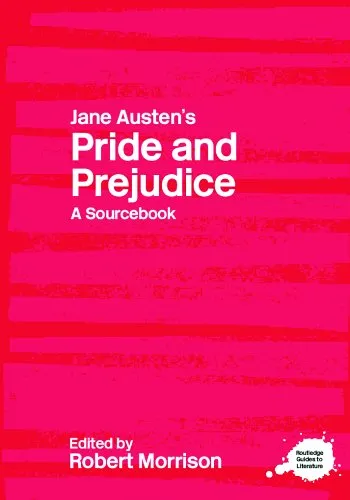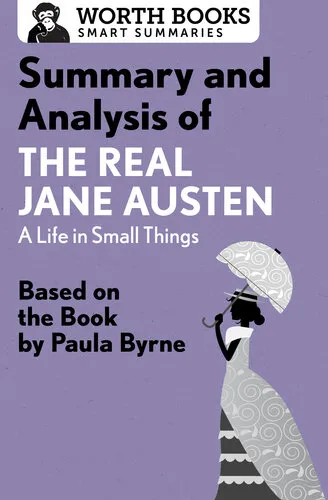Pride and Prejudice: A Sourcebook (Routledge Guides to Literature)
4.0
Reviews from our users

You Can Ask your questions from this book's AI after Login
Each download or ask from book AI costs 2 points. To earn more free points, please visit the Points Guide Page and complete some valuable actions.Related Refrences:
Persian Summary
Introduction to "Pride and Prejudice: A Sourcebook"
Welcome to an exploration of one of English literature’s most cherished works, Jane Austen’s "Pride and Prejudice". This sourcebook, part of the Routledge Guides to Literature series, offers an insightful and comprehensive analysis of the novel's themes, characters, and its significance in literary history. Whether you’re a student delving into Austen for the first time or a seasoned reader looking to deepen your understanding, this guide provides valuable perspectives and critical examination of the text.
Detailed Summary of the Book
"Pride and Prejudice", penned by Jane Austen, is a novel rich in themes of love, reputation, and class. Set in the Regency Era, the narrative follows Elizabeth Bennet, the intelligent and quick-witted protagonist, as she navigates societal expectations and personal relationships. The story begins with the arrival of the wealthy Mr. Bingley and his aloof friend Mr. Darcy in the neighborhood of Longbourn, where the Bennet family resides.
The plot intricately weaves through various relationships and encounters, primarily focusing on Elizabeth’s evolving perception of Mr. Darcy. Initially, Elizabeth's judgments are clouded by prejudice, fuelled by Mr. Darcy’s apparent pride. However, as the narrative progresses, revelations and misunderstandings align, leading to a profound transformation in both characters' perceptions.
Austen’s narrative masterfully critiques the class-consciousness and gender expectations of the society, encapsulating the journey toward mutual understanding and love between Elizabeth and Mr. Darcy. "Pride and Prejudice" remains a beloved classic, praised for Austen’s skilled characterizations and the nuanced exploration of its central themes.
Key Takeaways
- The novel highlights the clash between personal desire and societal expectations, illustrating the pressures faced by individuals in making life choices.
- Austen uses wit and irony to dissect the notions of pride and prejudice, showing how these traits can cloud judgment and lead to misinterpretations.
- The transformation of Elizabeth and Mr. Darcy underscores the importance of personal growth and understanding, essential for meaningful relationships.
Famous Quotes from the Book
Here are some memorable quotes from "Pride and Prejudice":
“It is a truth universally acknowledged, that a single man in possession of a good fortune, must be in want of a wife.”
“I declare after all there is no enjoyment like reading! How much sooner one tires of any thing than of a book!”
“Vanity and pride are different things, though the words are often used synonymously. A person may be proud without being vain.”
Why This Book Matters
"Pride and Prejudice" is not just a story about romantic entanglements; it is a penetrating critique of the societal norms of Austen’s time. Its enduring appeal is attributed to Austen’s sharp wit and insightful social commentary, which remain relevant today. The novel champions themes of authenticity, integrity, and the courage to defy societal conventions, making it a timeless exploration of human character.
Moreover, Austen’s skillful blending of romantic and social elements with humor and irony has established "Pride and Prejudice" as a cornerstone of classic literature. It continues to inspire adaptations and reinterpretations, underscoring its lasting impact on both readers and the literary canon.
Free Direct Download
You Can Download this book after Login
Accessing books through legal platforms and public libraries not only supports the rights of authors and publishers but also contributes to the sustainability of reading culture. Before downloading, please take a moment to consider these options.
Find this book on other platforms:
WorldCat helps you find books in libraries worldwide.
See ratings, reviews, and discussions on Goodreads.
Find and buy rare or used books on AbeBooks.
1346
بازدید4.0
امتیاز50
نظر98%
رضایتReviews:
4.0
Based on 0 users review
"کیفیت چاپ عالی بود، خیلی راضیام"
Questions & Answers
Ask questions about this book or help others by answering
No questions yet. Be the first to ask!



